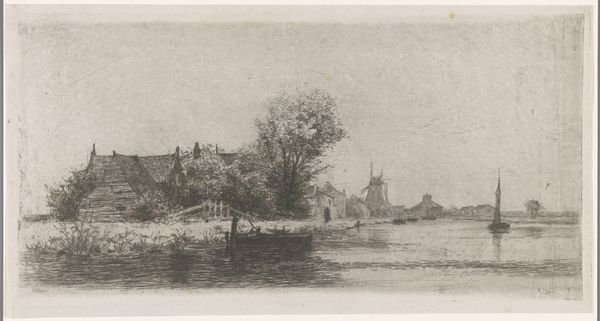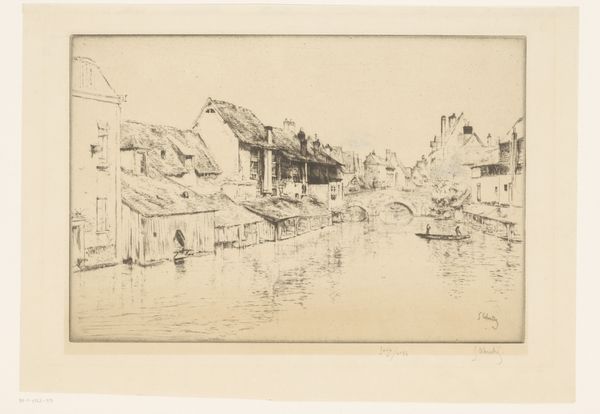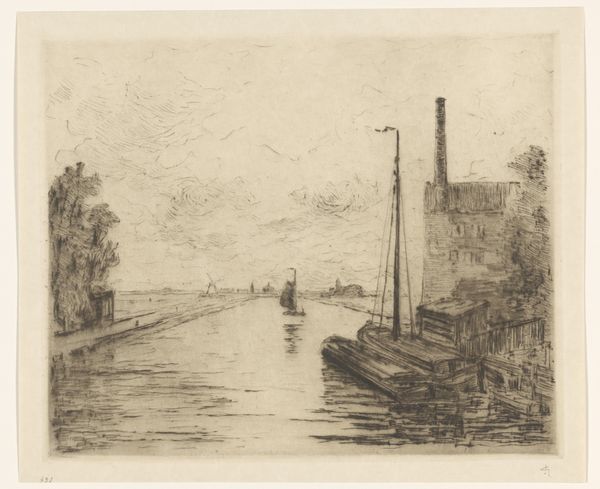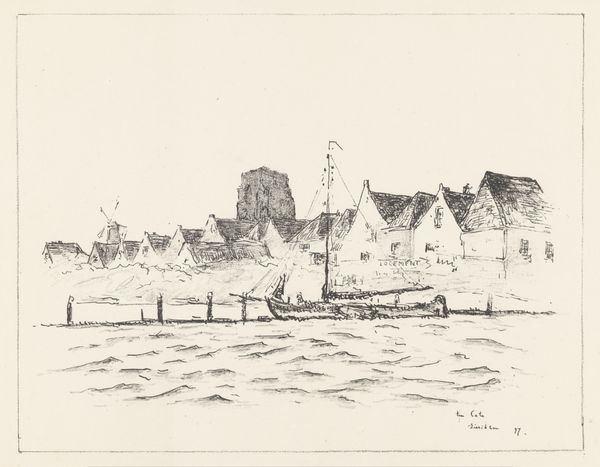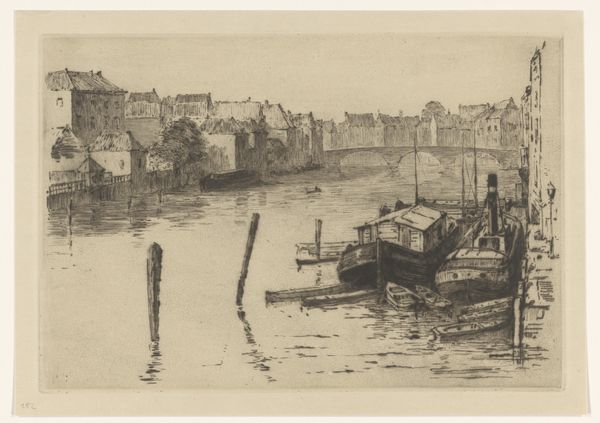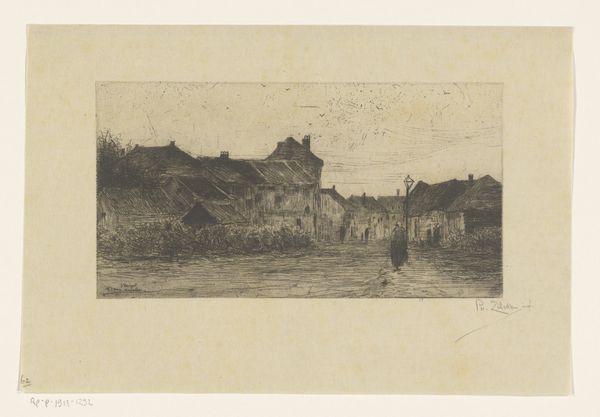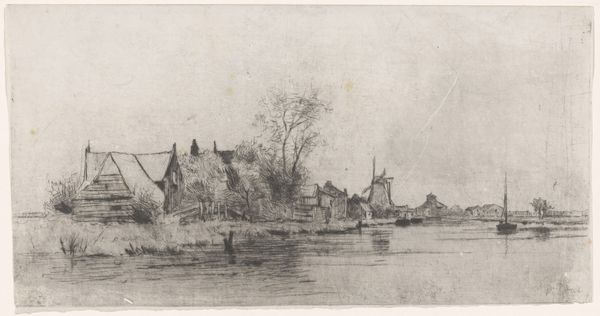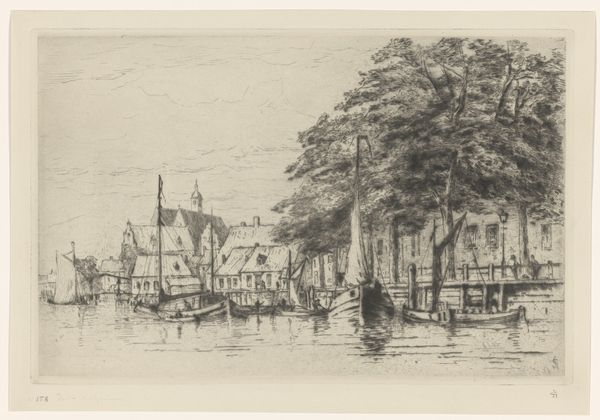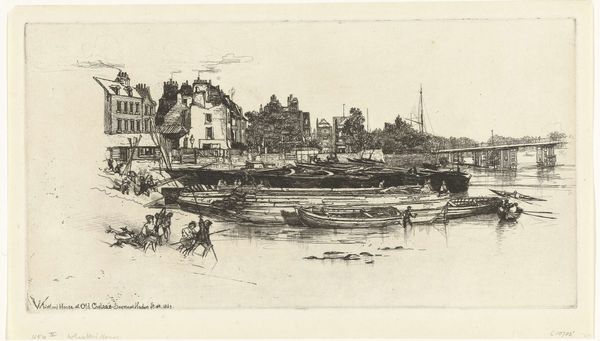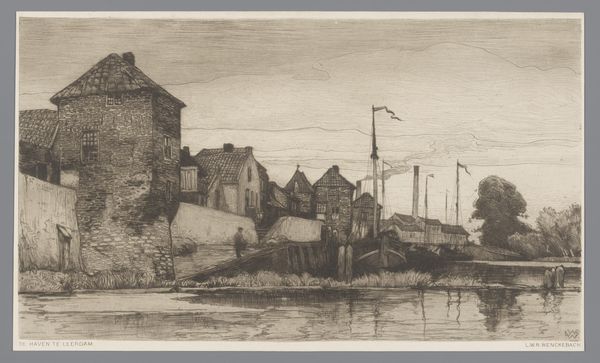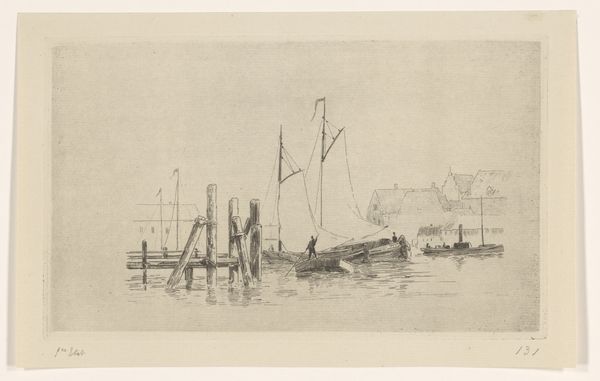
print, etching
#
dutch-golden-age
# print
#
etching
#
landscape
#
etching
#
cityscape
#
realism
Dimensions: height 300 mm, width 500 mm
Copyright: Rijks Museum: Open Domain
Editor: This is "Oude haven in Vlissingen," or "Old Harbor in Vlissingen," an etching by Carel Nicolaas Storm van 's-Gravesande, dating from around 1880 to 1884. The somber tones and focus on everyday life make it feel incredibly grounded. What draws your eye when you look at this piece? Curator: It’s interesting to consider how artists chose to represent urban spaces at this time. Etchings like this, widely distributed as prints, shaped public perceptions of the changing Dutch landscape. It's less about idealizing the scene, and more about documenting the impact of industrialization on everyday life in harbor towns. What social elements can you see shaping this depiction? Editor: I notice a real contrast. The buildings seem almost crowded together, yet there are few people visible. The focus is on the architecture and the water. Does this void somehow emphasize the impact of industrial advancement? Curator: Exactly! The near absence of human figures actually points to a larger theme in art of this period: The tension between community and progress. Consider how these harbor scenes were often romanticized. What's missing from that ideal that *is* captured here? Editor: Well, there's a certain grit and reality to it that the romanticized versions often gloss over. There's a sense of honest, maybe even challenging living. Curator: Precisely. And this unflinching portrayal connects directly to the broader shift in artistic intention – from glorifying the powerful, to reflecting the lives of the populace, and documenting their interaction with an evolving world. In this image, he is turning our attention to a reality more closely connected to our own experience. Editor: That's fascinating. It changes the way I view similar landscapes; now I'll look for the statement it makes. Curator: It certainly shifts the lens, doesn't it? Examining art within a broader socio-political framework illuminates a richer understanding of its value and intent.
Comments
No comments
Be the first to comment and join the conversation on the ultimate creative platform.
